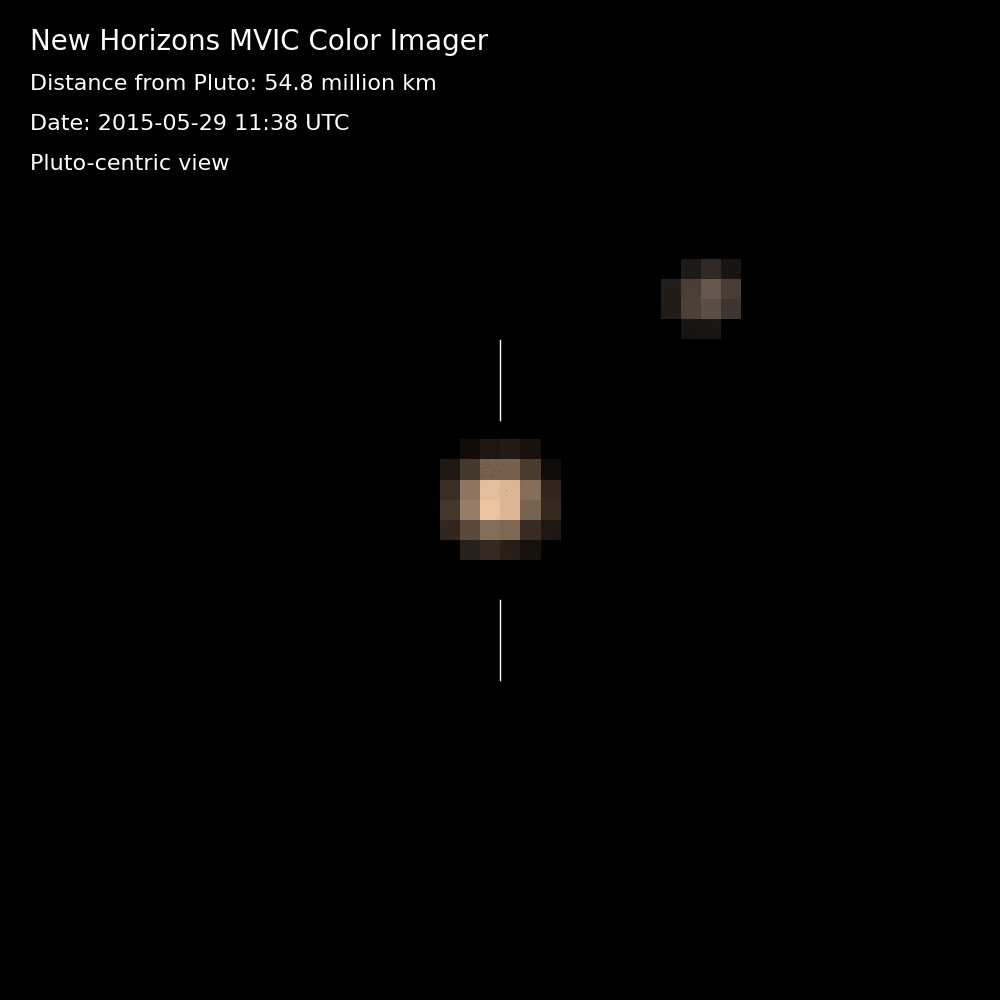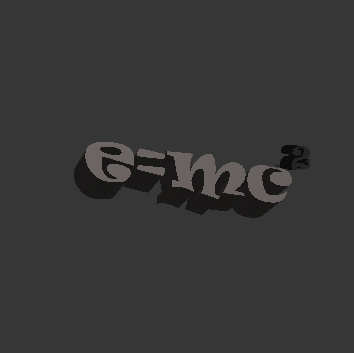
The first color movies from NASA’s New Horizons mission show Pluto and its largest moon, Charon, and the complex orbital dance of the two bodies, known as a double planet. “It’s exciting to see Pluto and Charon in motion and in color,” says New Horizons Principal Investigator Alan Stern of the Southwest Research Institute (SwRI), Boulder, Colorado. “Even at this low resolution, we can see that Pluto and Charon have different colors—Pluto is beige-orange, while Charon is grey. Exactly why they are so different is the subject of debate.” New Horizons will make its closest approach to Pluto on July 14, zipping by about 7,800 miles (12,500 kilometers) above the surface. It’s the first mission to Pluto and the Kuiper Belt, a relic of solar system formation beyond Neptune. Sending a spacecraft on this almost 3-billion mile journey will help us answer basic questions about the surface properties, atmospheres and moons of the Pluto system. These near-true color movies were assembled from images made in three colors – blue, red and near-infrared – by the Multicolor Visible Imaging Camera on the instrument known as Ralph, a “Honeymooners” reference that classic TV fans can appreciate. The images were taken on nine different occasions from May 29-June 3. Although the two movies were prepared from the same images, they display the Pluto-Charon pair from different perspectives. One movie is “Pluto-centric,” meaning that Charon is shown as it moves in relation to Pluto, which is digitally centered in the movie. (The North Pole of Pluto is at the top.) Pluto makes one turn around its axis every 6 days, 9 hours and 17.6 minutes—the same amount of time that Charon rotates in its orbit. Looking closely at the images in this movie, one can detect a regular shift in Pluto’s brightness—due to the brighter and darker terrains on its differing faces. The second movie is barycentric, meaning that both Pluto and Charon are shown in motion around the binary’s barycenter – the shared center of gravity between the two bodies as they do a planetary jig. Because Pluto is much more massive than Charon, the barycenter (marked by a small “x” in the movie) is much closer to Pluto than to Charon.
Jun 22
Pluto and Charon, Now in Color
Jun 14
Different Faces of Pluto Emerging in New Images from New Horizons

Image Credit: NASA/Johns Hopkins University Applied Physics Laboratory/Southwest Research Institute
The surface of Pluto is becoming better resolved as NASA’s New Horizons spacecraft speeds closer to its July flight through the Pluto system. A series of new images obtained by the spacecraft’s telescopic Long Range Reconnaissance Imager (LORRI) during May 29-June 2 show Pluto is a complex world with very bright and very dark terrain, and areas of intermediate brightness in between. These images afford the best views ever obtained of the Pluto system. New Horizons scientists used a technique called deconvolution to sharpen the raw, unprocessed pictures that the spacecraft beams back to Earth; the contrast in these latest images has also been stretched to bring out additional details. Deconvolution can occasionally produce artifacts, so the team will be carefully reviewing newer images taken from closer range to determine whether some of the tantalizing details seen in the images released today persist. Pluto’s non-spherical appearance in these images is not real; it results from a combination of the image-processing technique and Pluto’s large variations in surface brightness. Since April, deconvolved images from New Horizons have allowed the science team to identify a wide variety of broad surface markings across Pluto, including the bright area at one pole that scientists believe is a polar cap. “Even though the latest images were made from more than 30 million miles away, they show an increasingly complex surface with clear evidence of discrete equatorial bright and dark regions—some that may also have variations in brightness,” says New Horizons Principal Investigator Alan Stern, of the Southwest Research Institute, Boulder, Colorado. “We can also see that every face of Pluto is different and that Pluto’s northern hemisphere displays substantial dark terrains, though both Pluto’s darkest and its brightest known terrain units are just south of, or on, its equator. Why this is so is an emerging puzzle.” “We’ve seen evidence of light and dark spots in Hubble Space Telescope images and in previous New Horizons pictures, but these new images indicate an increasingly complex and nuanced surface. Now, we want to start to learn more about what these various surface units might be and what’s causing them. By early July we will have spectroscopic data to help pinpoint that.”
Jun 09
Mathematics: The Beautiful Language of the Universe-Universe Today

Let us discuss the very nature of the cosmos. What you may find in this discussion is not what you expect. Going into a conversation about the universe as a whole, you would imagine a story full of wondrous events such as stellar collapse, galactic collisions, strange occurrences with particles, and even cataclysmic eruptions of energy. You may be expecting a story stretching the breadth of time as we understand it, starting from the Big Bang and landing you here, your eyes soaking in the photons being emitted from your screen. Of course, the story is grand. But there is an additional side to this amazing assortment of events that oftentimes is overlooked; that is until you truly attempt to understand what is going on. Behind all of those fantastic realizations, there is a mechanism at work that allows for us to discover all that you enjoy learning about. That mechanism is mathematics, and without it the universe would still be shrouded in darkness. In this article, I will attempt to persuade you that math isn’t some arbitrary and sometimes pointless mental task that society makes it out to be, and instead show you that it is a language we use to communicate with the stars.

